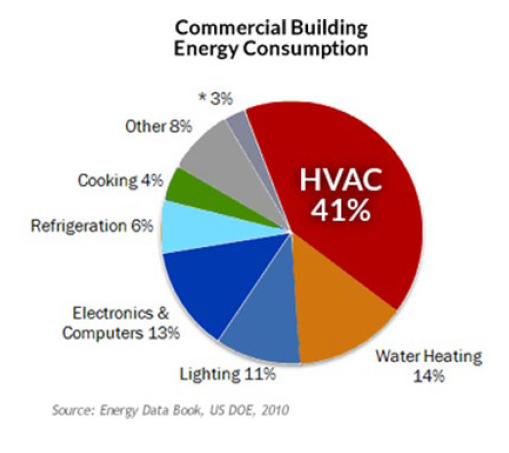 Let’s look at why smart buildings matter to commercial real estate owners. Energy cost savings are top of mind for every commercial building owner, operator, and facility manager, but it’s time to be proactive. On average, a U.S. office building spends nearly 29% of its operating expenses on utilities, and much of this expenditure goes toward HVAC operation.
Let’s look at why smart buildings matter to commercial real estate owners. Energy cost savings are top of mind for every commercial building owner, operator, and facility manager, but it’s time to be proactive. On average, a U.S. office building spends nearly 29% of its operating expenses on utilities, and much of this expenditure goes toward HVAC operation.
Download Printable Article (PDF)
Researchers at Massachusetts Institute of Technology (MIT) estimate commercial buildings account for 20% of all the energy used in the U.S. and conclude that as much as 30% of that energy is wasted. Wasted energy will only increase over time without intervention. Imagine a solution that prevents waste and saves 15-30% on energy expenses? That’s possible to achieve with smart buildings.
Smart buildings are any facility that have complete automated controls and systems in place that are integrated together to form an intelligent data collection application, usually via a building automation system (BAS).
BAS offers reduced operation and energy consumption, improved building efficiency, preventative maintenance, comfort for workers and building occupants, and better use of resources.
At Pennoni, we offer our Utilities Watch (UW) solution, a combination of best-in-class energy analytics/fault detection software and engineering expertise that optimizes buildings, reduces costs, and minimizes environmental impact.
Through UW, our software continually analyzes data from diverse systems: BAS, energy, water, and other resource metering systems to identify opportunities for cost reduction. The fault detection and diagnostics application within the software drills down into patterns to identify issues, deviations, and opportunities for operational improvements and cost reduction.
Utilities Watch Key Benefits
Reduce costs
- Optimize buildings and reduce energy consumption
- Increase control and visibility of energy budget
- Decrease maintenance and capital costs through proactive and predictive maintenance
- Increase lifespan and reliability of HVAC systems
Validation and M&V
- Performance goals
- ECM’s, LEED
Commissioning
- MBCx – automated ongoing commissioning
Risk Management
- Disaster recovery (information supports better identification of issues)
Improve sustainability strategies, goals, and metrics
- Full integration to EnergyStar Portfolio Manager
- Earn additional LEED points for existing buildings
Improve portfolio management
- Benchmark buildings and compare performance
- Performance accountability
Deploying smart buildings software is only half of the equation. Our energy analysts and engineers write custom algorithms to automate analyses that traditionally required constant manual effort. From there, our team of engineers interprets the data to make it meaningful and actionable with custom dashboards and notifications that ensure the facility manager has full visibility and can readily prioritize activities, ensuring much greater efficiency.



